Melbourne is a city that has grown to depend on private motor vehicles, with a woeful bus network that fails to connect to the railway lines that do exist. So it isn’t a real surprise to see that ‘park and ride’ car parks have been seen as the solution to the problem.
The early years
The first multi-deck car park at a Melbourne railway station opened in 1984 as part of the rebuild of Box Hill into a transport interchange and shopping centre. On the lowest level of the shopping centre car park, there is an area dedicated to all day parking by public transport users.
But it took two decades for the next one to be built – in inner suburban Elsternwick on the Sandringham line. There a 156-space, five-level car park was built in 2003 beside the railway station, as part of a $10 million residential and commercial development on 4000 sq metres of publicly owned land.
And it took another decade for the third multi-deck car park to be built – a $10.8 million four storey structure at Syndal on the Glen Waverley line, which added 250 car spaces to bring the total at the station to 590.
And it’s on
With the launch of the Level Crossing Removal Project in 2015, there has been one iron clad commitment followed in every single project they have completed across Melbourne – “no net loss of car parking”.
Initially this requirement was met by expanding at grade car parks at nearby railway stations or on land freed up by the relocation of railway tracks, but as the project moved into more densely populated areas, this was not possible.
And so Cheltenham station gained a four storey 220-space car park in 2020.
And Mooroolbark station gained a four storey 900-space behemoth in 2022.
And doubling down
In the lead up to the 2019 federal election the Morrison Government launched their ‘Urban Congestion Fund’ – intended to fund car parks at railway stations, it was widely criticised as a way to buy votes in marginal seats.
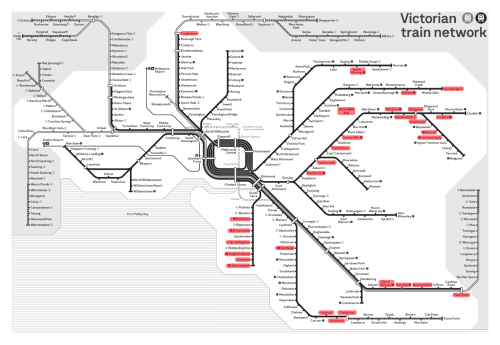
Australian National Audit Office diagram
But the Andrew’s Government in Victoria had already been playing that game, following the launch of the $150 million ‘Car Parks for Commuters Fund’ in 2018. Multi-deck car parks being built as part of this program include –
Frankston: 500-space multi-deck car park, jointly funded by the Victorian Government and the Australian Government, and delivered by the Level Crossing Removal Project.
Greensborough: 100-space car park and bus interchange, jointly funded by the Victorian Government and the Australian Government, and delivered by the Level Crossing Removal Project.
Sunbury: 300-space car park, funded by the Victorian Government, Australian Government Urban Congestion Fund, and the Growth Areas Infrastructure Contribution (GAIC) Fund.
Watsonia: 60-space car park as part of the North East Link project.
Belgrave: 640-space car park funded by the Victorian Government and delivered by VicTrack.
Footnote: meanwhile in Sydney
Up in Sydney they’ve building multi-deck car parks at railway stations for decades – one example is the $29 million expansion of the Revesby station car park, which added three storeys to the existing car park, providing 385 additional car spaces.
Further reading
It’s surprisingly hard to find how many car parks actually exist at Melbourne railway stations, but back in 2016 Public Transport Victoria published a dataset, which Philip Mallis has plotted in map form here.
The Office of the Victorian Government Architect also has a Design principles: Multi-deck commuter car parks document, to describes how they can “can support and contribute to a well-connected, enjoyable, safe and vibrant public realm”.
Daniel Bowen has also written about Melbourne’s station parking problem, and the poor state of alternatives to driving to the station.
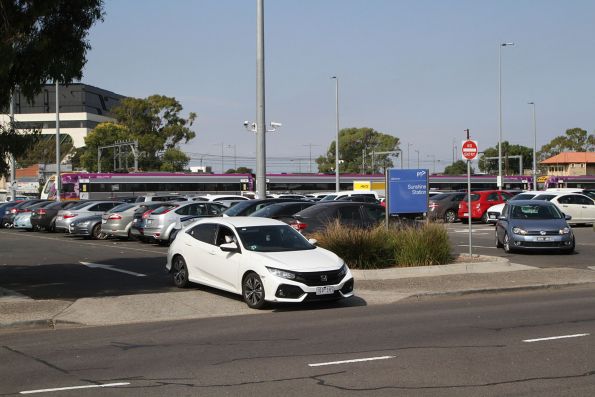
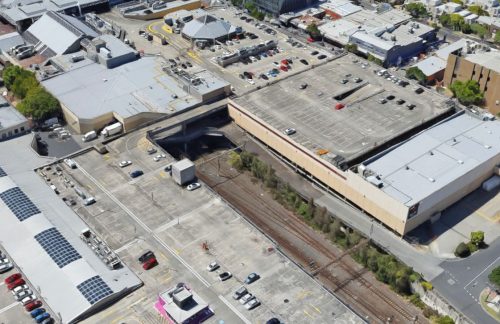
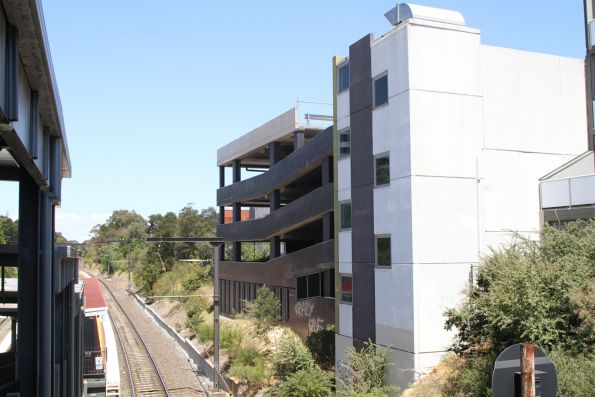
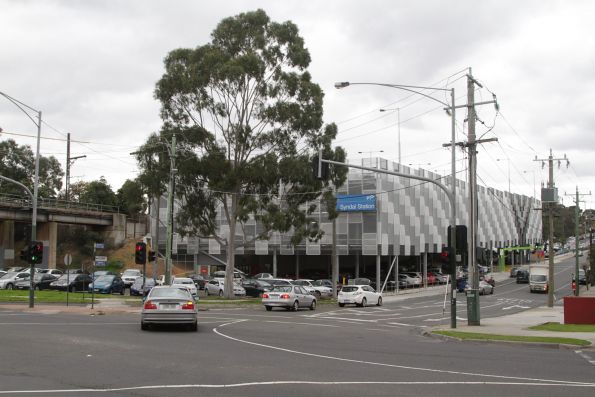
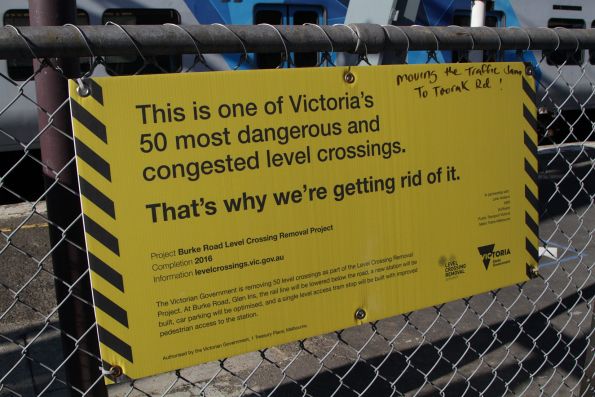
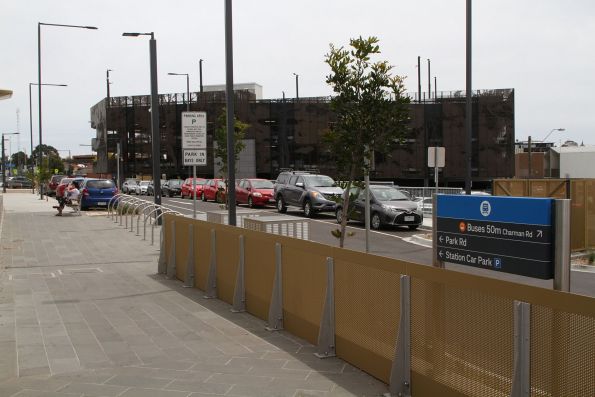
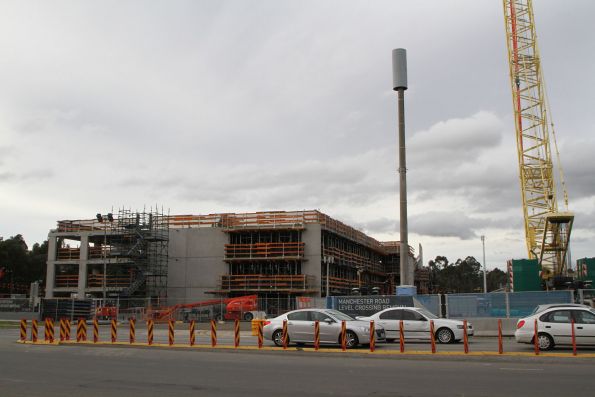
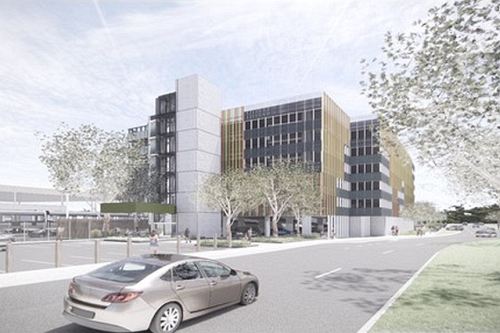
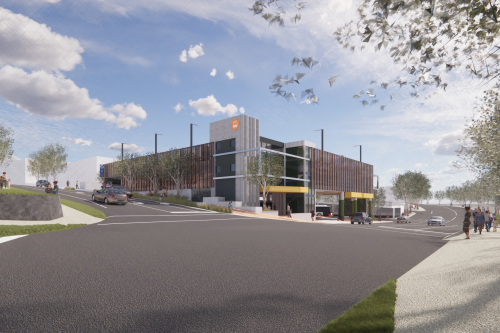
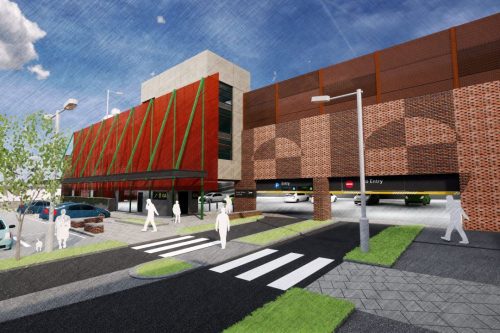
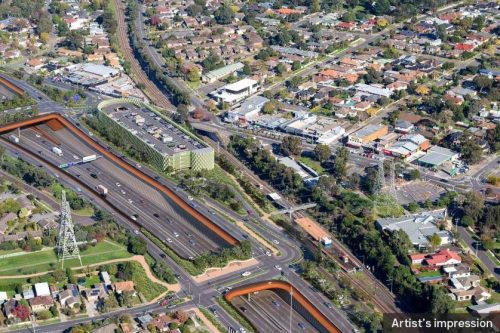
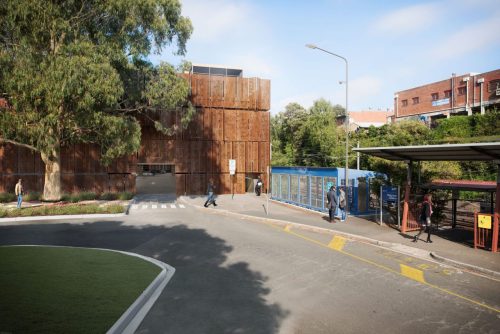
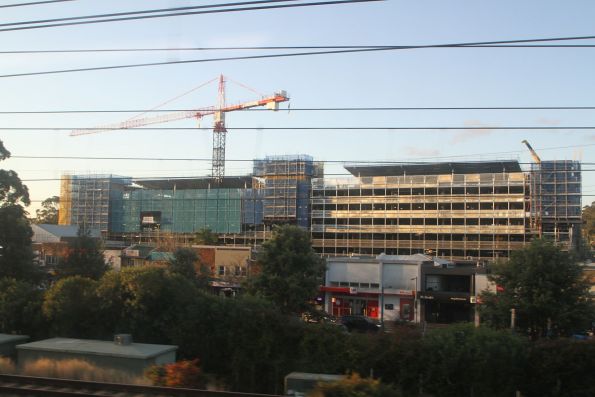

Because car parks, ground level or multi-storey, take up so much space, it might seem that the majority of passengers drive to he station. In fact, even in the outer areas of Melbourne (Zone 2) only a minority of passengers get to the station by car.
Of course, the money wasted on massive and expensive car parks, which are not generally required on at least two days a week, would be better sent on enhancing sustainable ways of getting to stations, particularly bus connections.
Carparks at stations are not the answer. They are an eyesore, a waste of space, a waste of money, and they cannot possibly ever accommodate everyone who uses the trains. Basically, just like a bucket catching the water when the ceiling leaks – however big the bucket is eventually it overflows.
What is required is fit-for-purpose transport to the stations, and proper interchanges. This is not provided by the bus monopoly we have, with big buses going down roads that they can navigate easily – often many routes using the same sections of road – and many stations not having a proper interchange with passenger shelter and seating. Hong Kong is a pretty good model to follow, with its privately-owned licensed minibuses servicing where people actually live and where they want to go. I have watched with awe these vehicles serving individual groups of apartment blocks, buzzing in and out all day and most of the night.
As for the trains on the MTR in Hong Kong, the first train ran only in 1979 and what a great system it is now. Clean, fast and frequent. When last there in 2017 I rode the new South Island Line, which runs underground bang through the middle of the island.
We are so far behind with public transport here in Melbourne, Victoria and Australia that it is not funny. It is best described as dirty, slow, occasional and out-dated.
Ocean Park Station on the South Island Line actually has a 71 space car park – at a cost of HK$24 an hour (about $4.50 AUD) for the public, or a reduced charge of HK$15 ($3 AUD) for train passengers.
https://www.mtr.com.hk/en/customer/services/aestations_carpark.html
I guess that there is some car parking at certain MTR stations. We’d crossed the water from Aberdeen and I happened to see an entrance to Lei Tung station and we decided to return to Central by train. Worth noting in passing that the HK Octopus Card, which you can buy at the airport, has multiple uses.
https://www.octopus.com.hk/en/consumer/octopus-cards/products/sold-tourist/index.html
Integrated system!
Being able to tap your Octopus card to pay for stuff at vending machines and in shops was an amazing feature when introduced back in the 1990s, but since contactless payments was added to credit cards, it’s no longer a ‘killer app’ to include in a new transit smartcard system.
These are good car parks and allow more people to ride trains!
A single 7-car High Capacity Metro Train can carry 1,380 passengers, 1,800 at crush load.
https://en.wikipedia.org/wiki/High_Capacity_Metro_Train
So a 500 space car park would let half a train of passengers drive there – not much in the grand scheme of things.